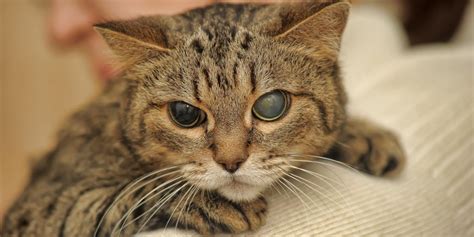Introduction
Omega-3 fatty acids are essential nutrients that cats cannot produce on their own. They must obtain them from their diet. A deficiency in omega-3s can lead to a wide range of health problems, including skin and coat issues, joint pain, and cognitive decline.

As the year 2025 approaches, concerns are growing about the increasing prevalence of omega-3 deficiency in cats. This is due to several factors, including:
- The rise of processed pet foods, which often contain low levels of omega-3s
- The increased use of indoor cats, which have less access to natural sources of omega-3s
- The aging of the cat population, which can lead to a decrease in their ability to absorb omega-3s
Symptoms of Omega-3 Deficiency in Cats
The following are some of the most common symptoms of omega-3 deficiency in cats:
- Dull and dry coat
- Excessive shedding
- Flaky skin
- Itchy skin
- Skin infections
- Joint pain
- Lameness
- Decreased mobility
- Cognitive decline
- Behavioral problems
Causes of Omega-3 Deficiency in Cats
There are several factors that can contribute to omega-3 deficiency in cats. These include:
- Diet: The most common cause of omega-3 deficiency is a diet that is low in omega-3s. This can occur if cats are fed a diet of processed pet foods, which often contain low levels of omega-3s. It can also occur if cats are fed a diet of homemade food that is not properly balanced.
-
Health conditions: Certain health conditions can also lead to omega-3 deficiency. These include:
- Malabsorption syndromes
- Pancreatitis
- Liver disease
- Kidney disease
-
Medications: Some medications can also interfere with the absorption or metabolism of omega-3s. These include:
- Corticosteroids
- Non-steroidal anti-inflammatory drugs (NSAIDs)
- Antibiotics
Diagnosis of Omega-3 Deficiency in Cats
A diagnosis of omega-3 deficiency is based on a combination of the cat’s symptoms, physical examination, and blood tests. Blood tests can measure the levels of omega-3s in the cat’s blood. However, it is important to note that blood tests are not always accurate in diagnosing omega-3 deficiency.
Treatment of Omega-3 Deficiency in Cats
The treatment for omega-3 deficiency is to increase the cat’s intake of omega-3s. This can be done by:
-
Changing the cat’s diet: The best way to increase a cat’s intake of omega-3s is to feed them a diet that is high in omega-3s. This includes:
- Fish-based cat foods
- Canned tuna
- Salmon oil
- Krill oil
- Supplements: Omega-3 supplements can also be used to increase a cat’s intake of omega-3s. These supplements are available in capsule, tablet, and liquid form.
Prevention of Omega-3 Deficiency in Cats
The best way to prevent omega-3 deficiency in cats is to feed them a diet that is high in omega-3s. This includes fish-based cat foods, canned tuna, salmon oil, and krill oil. It is also important to avoid feeding cats a diet of processed pet foods, which often contain low levels of omega-3s.
Conclusion
Omega-3 deficiency is a growing concern for cats. This is due to several factors, including the rise of processed pet foods, the increased use of indoor cats, and the aging of the cat population. The symptoms of omega-3 deficiency in cats include dull and dry coat, excessive shedding, flaky skin, itchy skin, skin infections, joint pain, lameness, decreased mobility, cognitive decline, and behavioral problems. The treatment for omega-3 deficiency is to increase the cat’s intake of omega-3s. This can be done by changing the cat’s diet or by giving them supplements. The best way to prevent omega-3 deficiency in cats is to feed them a diet that is high in omega-3s.
Omega-3 Deficiency in Cats: FAQs
Q: What are the symptoms of omega-3 deficiency in cats?
A: The symptoms of omega-3 deficiency in cats include dull and dry coat, excessive shedding, flaky skin, itchy skin, skin infections, joint pain, lameness, decreased mobility, cognitive decline, and behavioral problems.
Q: What are the causes of omega-3 deficiency in cats?
A: The causes of omega-3 deficiency in cats include:
- Diet
- Health conditions
- Medications
Q: How is omega-3 deficiency in cats diagnosed?
A: A diagnosis of omega-3 deficiency in cats is based on a combination of the cat’s symptoms, physical examination, and blood tests.
Q: How is omega-3 deficiency in cats treated?
A: The treatment for omega-3 deficiency in cats is to increase the cat’s intake of omega-3s. This can be done by changing the cat’s diet or by giving them supplements.
Q: How can omega-3 deficiency in cats be prevented?
A: The best way to prevent omega-3 deficiency in cats is to feed them a diet that is high in omega-3s.





















